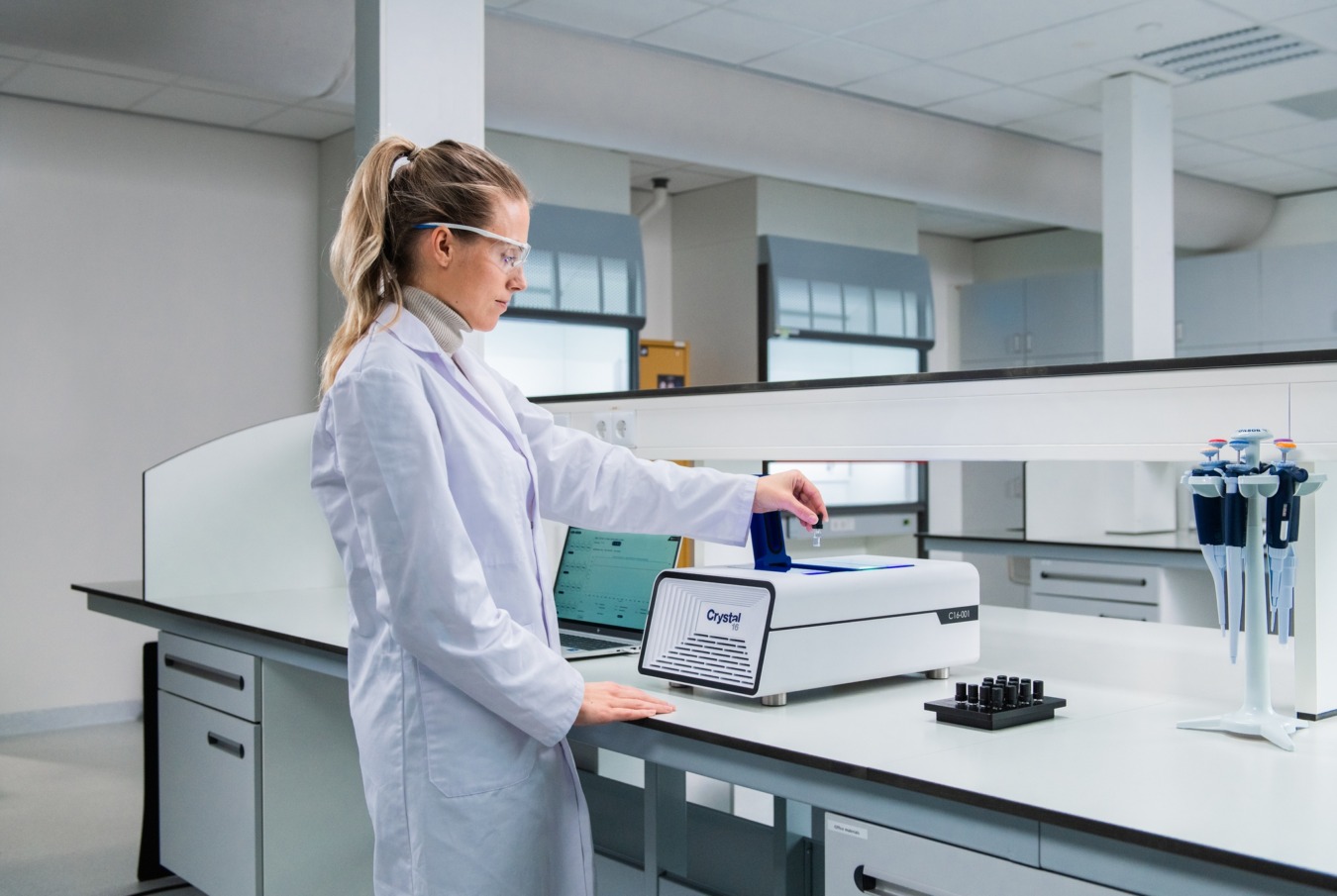Advanced temperature features
Integrated air cooling with extended temperature range. From -20 to 150°C with all 4 block reactors in parallel.
A multi-reactor crystallizer for medium throughput solubility. The latest version has integrated transmissivity technology and enhanced analytical capabilities, in a streamlined unibody design, to reduce the time and resources consumed in crystallization experiments and analysis.
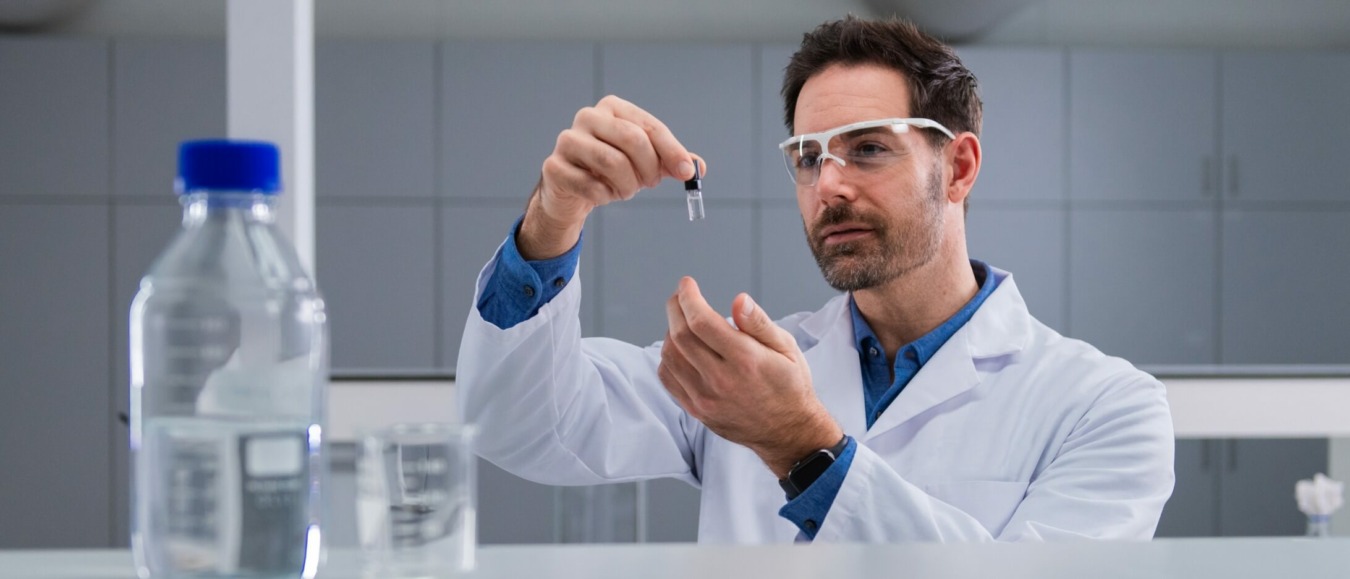

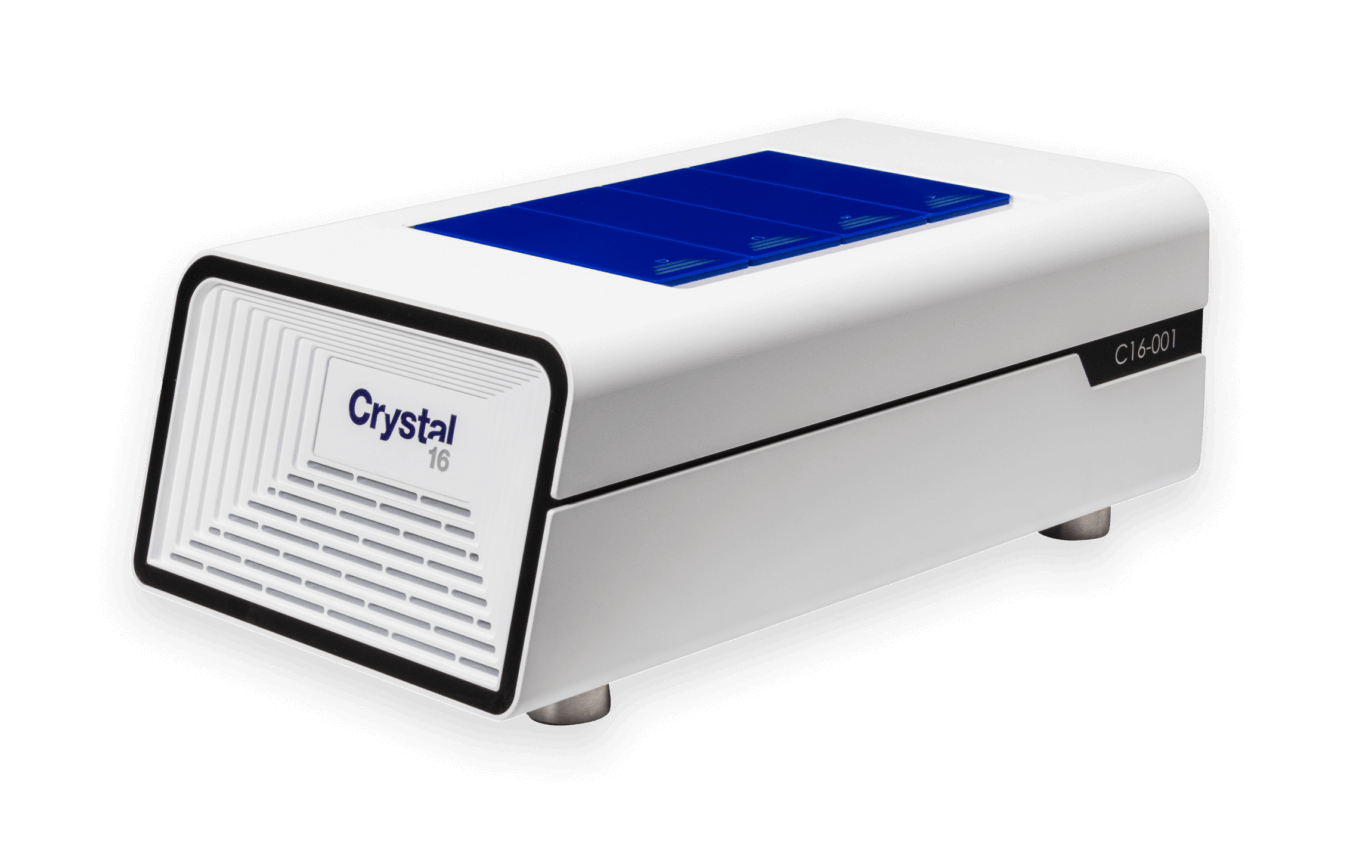
Improve and accelerate your crystallization research with the Crystal16 parallel crystallizer, the ultimate instrument for research and process development. With 16 reactors at a volume of 1mL, easily determine solubility curves and screen for crystallization conditions. The integrated transmissivity technology allows simple generation of phase diagrams ideal for a wide range of industries including pharmaceutical, chemical and agro-chemical companies.
Experience the tool being used all over the world by chemists. Designed by scientists for scientists.
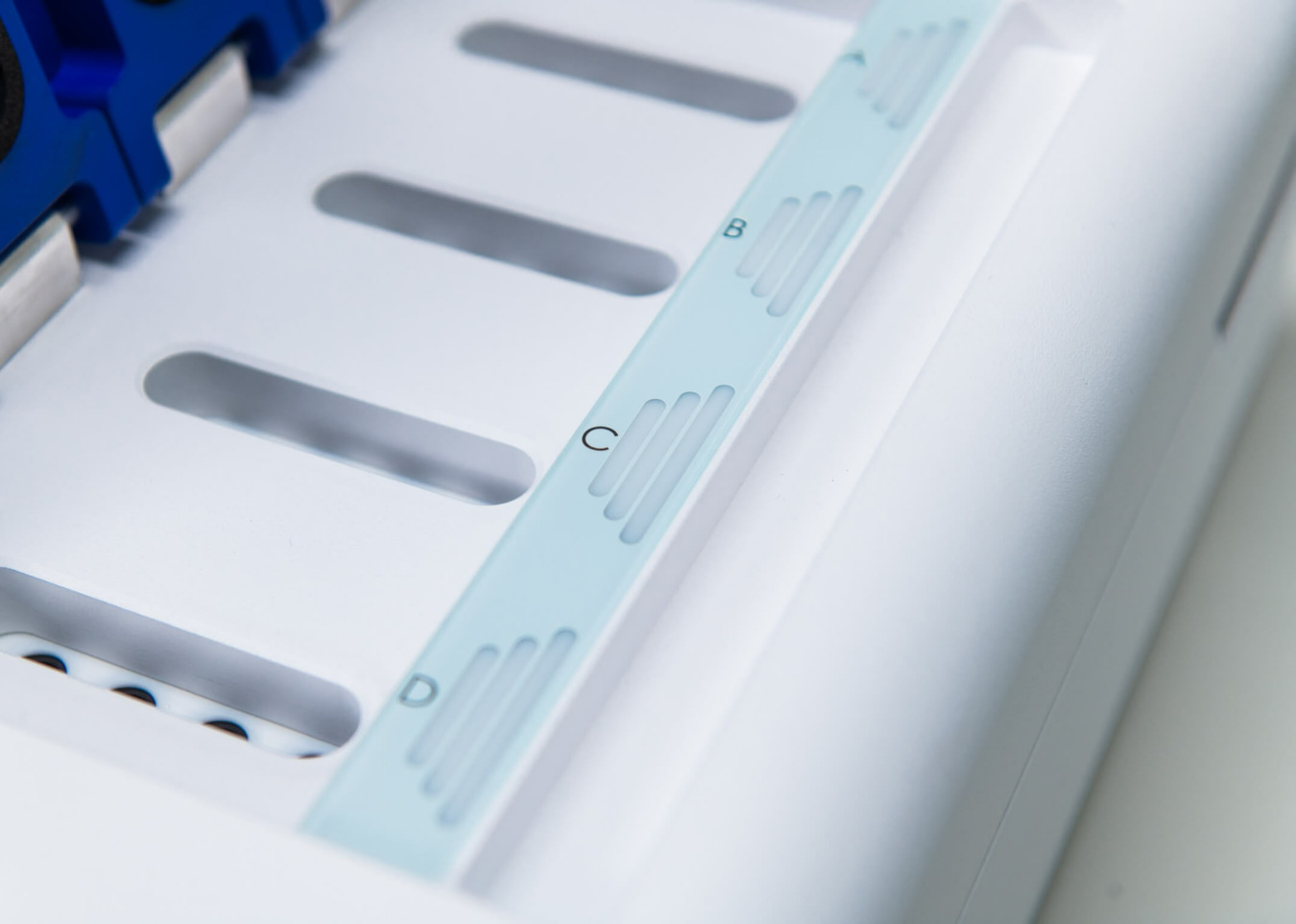
The Crystal16 combines automation with integrated transmissivity technology allowing the scientist to easily determine clear and cloud points resulting in solubility data and mg/ml of metastable zone width (MSZW) at an early stage. The Crystal16 can quite simply generate solubility curves for four solvents in 4 hours with less than 100 mg of material.
The increased accuracy of temperature control and the integrated transmissivity technology resulted in improved particle detection at low and high concentrations.
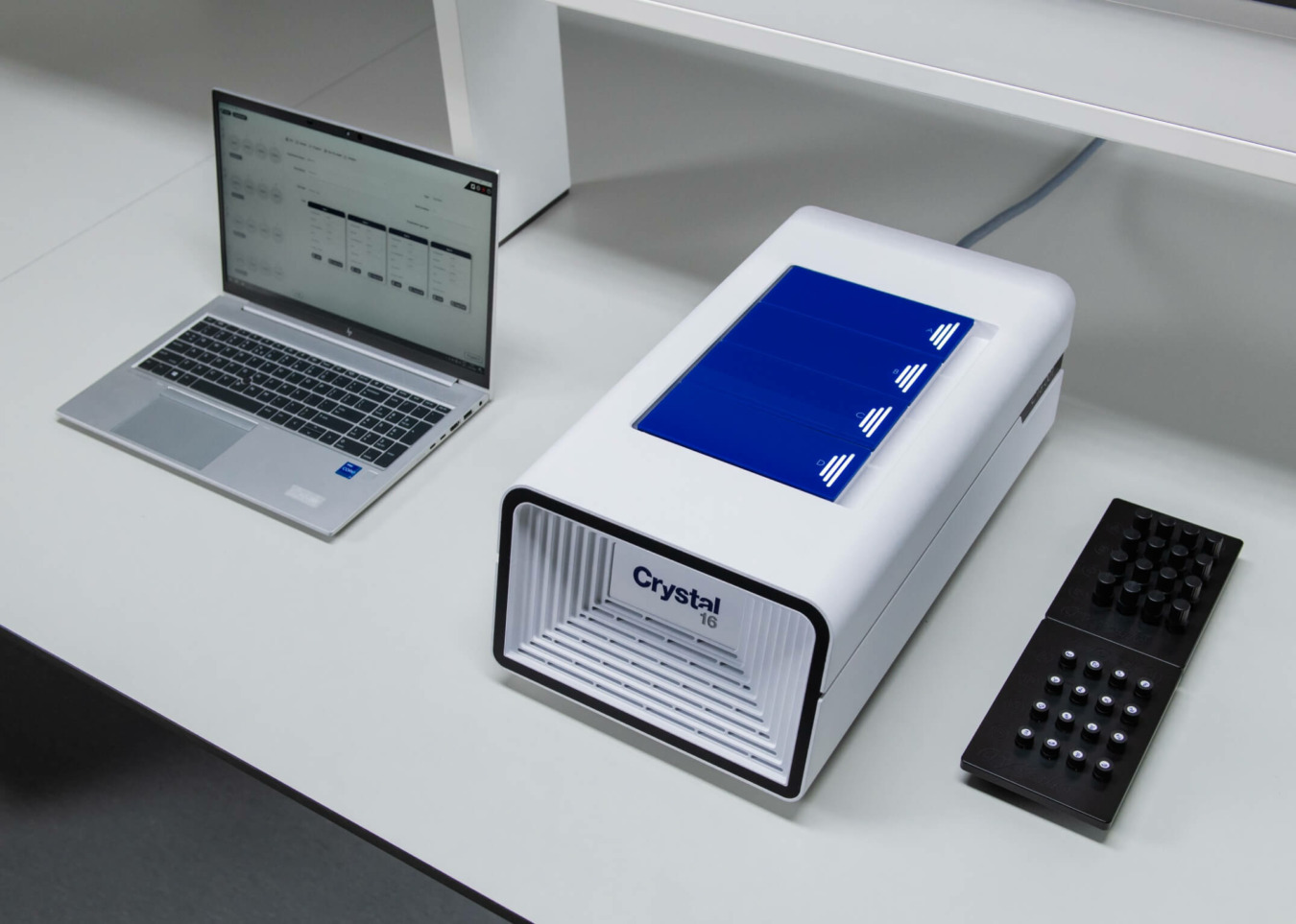
The Crystal16 is a powerful system to simply use for polymorphism, salt or co-crystal formation. Using 16 parallel reactors, you can test a wide diversity of crystallization conditions such as solvents and solvent mixtures, compound concentrations, counter-ions, temperature profiles.
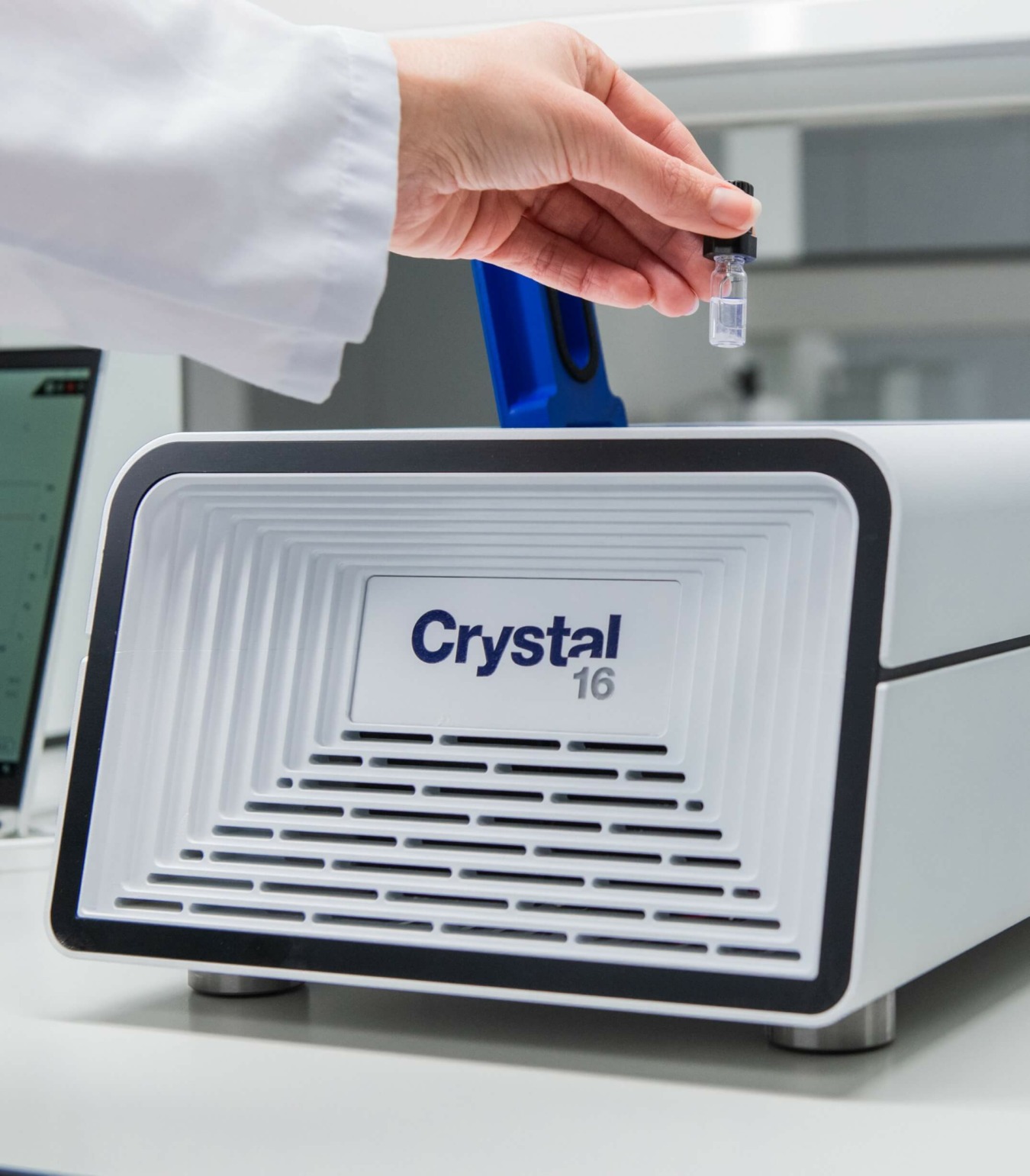
Solubility data are used to make crucial decisions from the earliest stages of drug discovery and throughout the entire development process.
This white paper covers two dynamic methods for effective and reproducible solubility data generation: the temperature variation and solvent addition methods. These methods can be easily applied by making use of the turbidity probes integrated in the Crystal16 and particle viewer cameras of the Crystalline instruments.
Advanced temperature features
State-of-the-art software
Ground-breaking transmissivity technology
Feedback control
Overhead and bottom stirring
Reactors: 16
Reactor type: Commercially available, glass
Optimal work volume (mL): 0.5 to 1.0
Temperature zones: 4
Temperature range (°C): -20 to 150
T ambient 20°C +-2°C: All 4 block reactors in parallel
Temperature accuracy (°C): 0.5
Heating rate (°C/min): 0 - 20
Cooling rate (°C/min): 0 - 20
Stirring: Overhead or stirrer bar
Stirring speed (rpm): 0 - 1250
Turbidity (%): Every reactor
Chiller optional: Required to achieve -25 to 150 in all 4 block reactors in parallel
Data export: CSV, Word report, XML
Foot print (DxWxH in cm.): 50x28x18.5
The Crystal16® multiple-reactor system can hold 16 (4 x 4) standard HPLC glass vials (11.5 mm diameter, flat bottomed, 1.5 mL volume).
A unit contains four independently temperature controlled reactor blocks encased in a robust bench top setup, taking up only a minimum of your valuable lab space. Accurate temperature control is achieved through a combination of Peltier elements and a heater.
In order to prevent condensation on the reactor blocks and electronics during runs at temperatures below 10°C the Crystal16® system provides an inlet for a dry purge gas (typically nitrogen).
CrystalClear is a software package that helps Crystal16® users to transform data produced by the Crystal16® into valuable information, in just a few simple steps.
Step 1: Import your project data files from Crystal16® into CrystalClear
Step 2: Visualize and (optionally) edit Clear and Cloud points to one's need
Step 3: Visualize the Meta Stable Zone Width; valuable information as a foundation of a solid crystallization process
Step 4: Automatically create a final report exportable to Word
The CrystalClear software is compatible with all our instruments – CrystalBreeder, Crystal16 and Crystalline. It is flexible, intuitive, effortless to use and helps you analyze your data in no time.
